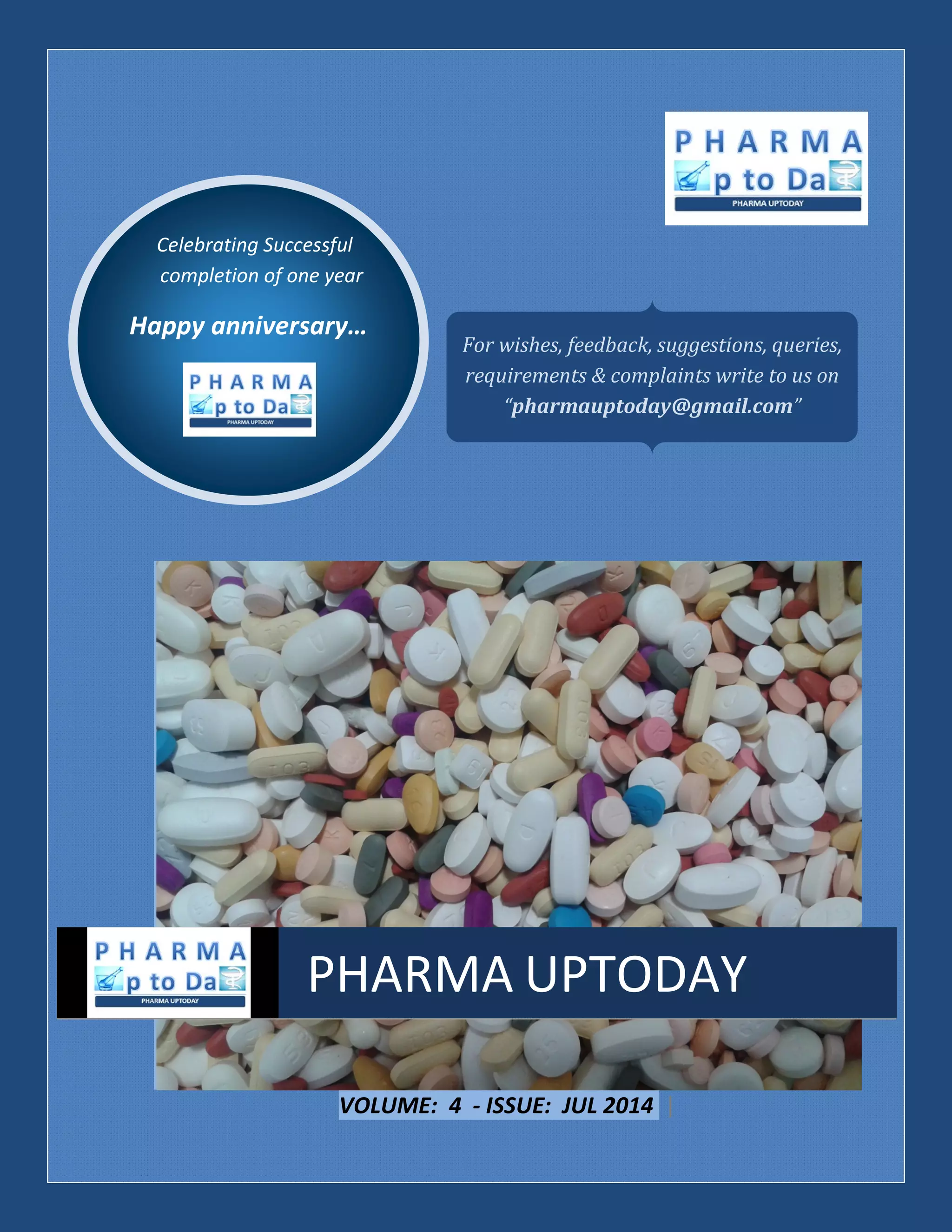This document covers various updates in the pharmaceutical industry, including inspections, regulatory changes, and legal actions involving major companies. Notable topics include the lifting of a drug export ban on Ranbaxy, FDA inspections of Divis Laboratories and Granules India, and the approval of Glenmark's new facility in Switzerland. Additionally, it mentions the European Medicines Agency's new requirements for marketing-authorisation holders and ongoing legal proceedings against Novartis in Japan.





















![PHARMA UPTODAY
22
3. Your firm failed to establish and follow an adequate written testing program designed to assess the
stability characteristics of drug products and to use results of such stability testing to determine
appropriate storage conditions and expiration dates (21 CFR 211.166(a)).
Source : http://www.fda.gov/ICECI/EnforcementActions/WarningLetters/2014/ucm400665.htm
Warning letter of ID Biomedical Corp., a subsidary of GSK Biologicals (CBER-14-03):
The Food and Drug Administration (FDA) conducted an inspection of ID Biomedical Corporation of Quebec d/b/a
GlaxoSmithKline Biologicals (GSK), located at 2323 du Parc Technologique Blvd, Quebec, Canada G1P4R8, from
March 31, to April 9, 2014. During the inspection, FDA investigators documented deviations from current good
manufacturing practice (CGMP) requirements in the manufacture of your licensed biological drug product
Flulavaland its intermediates.
Significant deviations observed during the inspections include, but were not limited to, the following:
1) You failed to assure that appropriate written procedures designed to prevent microbiological contamination
of drug products purporting to be sterile, are established and followed. Such procedures include validation
of all aseptic and sterilization processes [21 CFR 211.113(b)].
2) Controls for the purified water system at your facility are inadequate to prevent bioburden and endotoxin
excursions.
3) Manufacturing controls in place for both the (b)(4) containing and the (b)(4) manufacturing processes are
inadequate to control bioburden and endotoxin. Throughout 2013-2014 the process continued to generate
Out of Specification (OOS) results for bioburden and endotoxin even after several corrective and preventive
actions (CAPAs) were implemented.
4) From 2012 to 2014, viral inactivation of several monovalent lots could not be confirmed. Your explanation
was that the observed microbial contamination caused high mortality of the test eggs before the (b)(4) test
could be completed. These lots were rejected.
5) Your investigation into the repeated bioburden excursions associated with (b)(4) is inadequate.
Source : http://www.fda.gov/ICECI/EnforcementActions/WarningLetters/2014/ucm401719.htm
Warning letter of Pharmacy Creations, NJ
From August 5, 2013 to August 19, 2013, U.S. Food and Drug Administration (FDA) investigators conducted
aninspection of your facility, Pharmacy Creations, located at 540 Route 10 West, Randolph, NJ 07869.
FDA investigators also noted CGMP violations at your facility, causing the drug products for which you have not
obtained valid prescriptions for individually-identified patients to be adulterated under section 501(a)(2)(B) of the
FDCA [21 U.S.C. § 351(a)(2)(B)]. The violations include, for example:](https://image.slidesharecdn.com/pummvolume4issuejul2014-140718134212-phpapp01/75/Pharma-Uptoday-Monthly-Magazine-volume-4-issue-jul-2014-22-2048.jpg)




